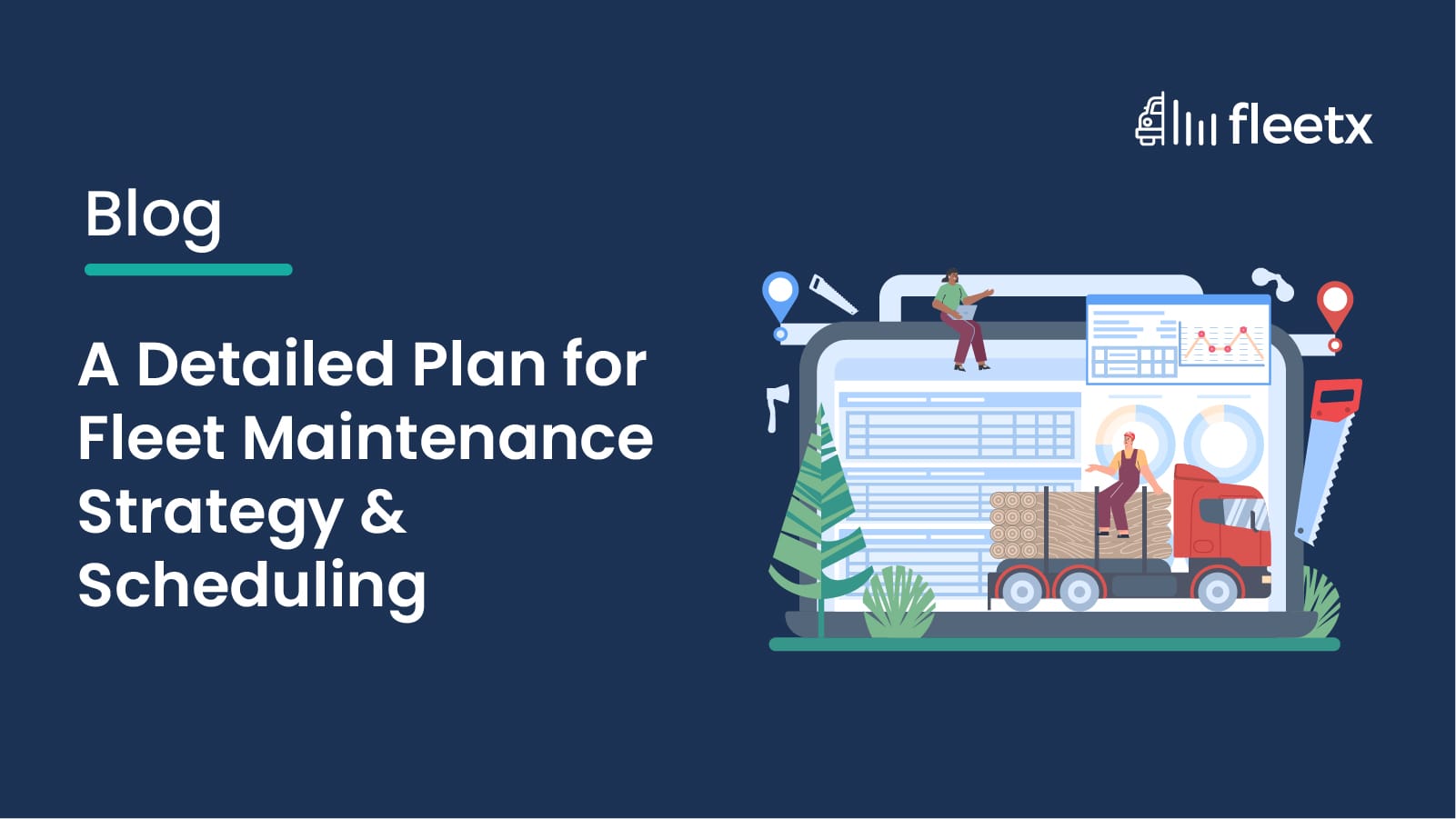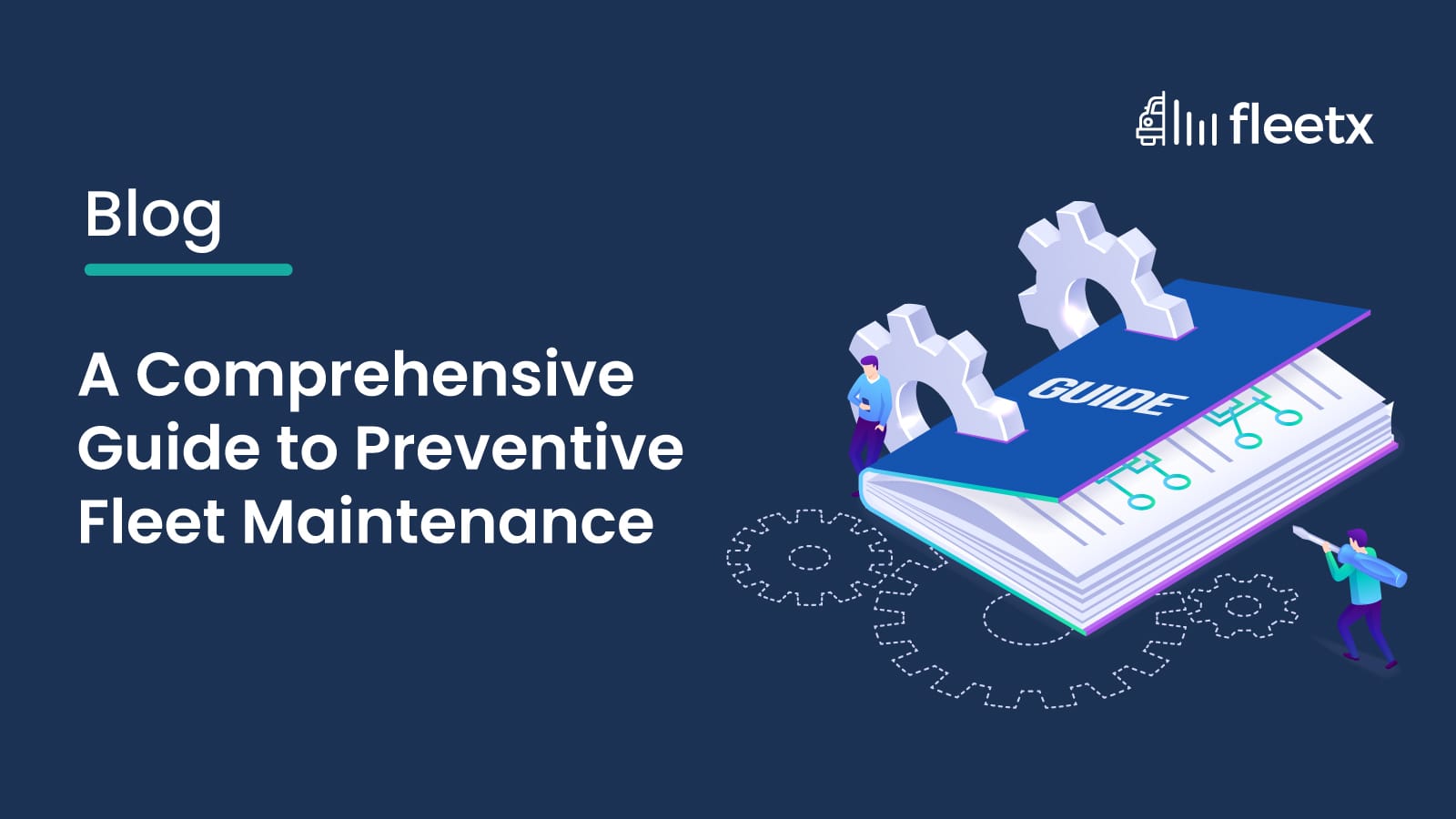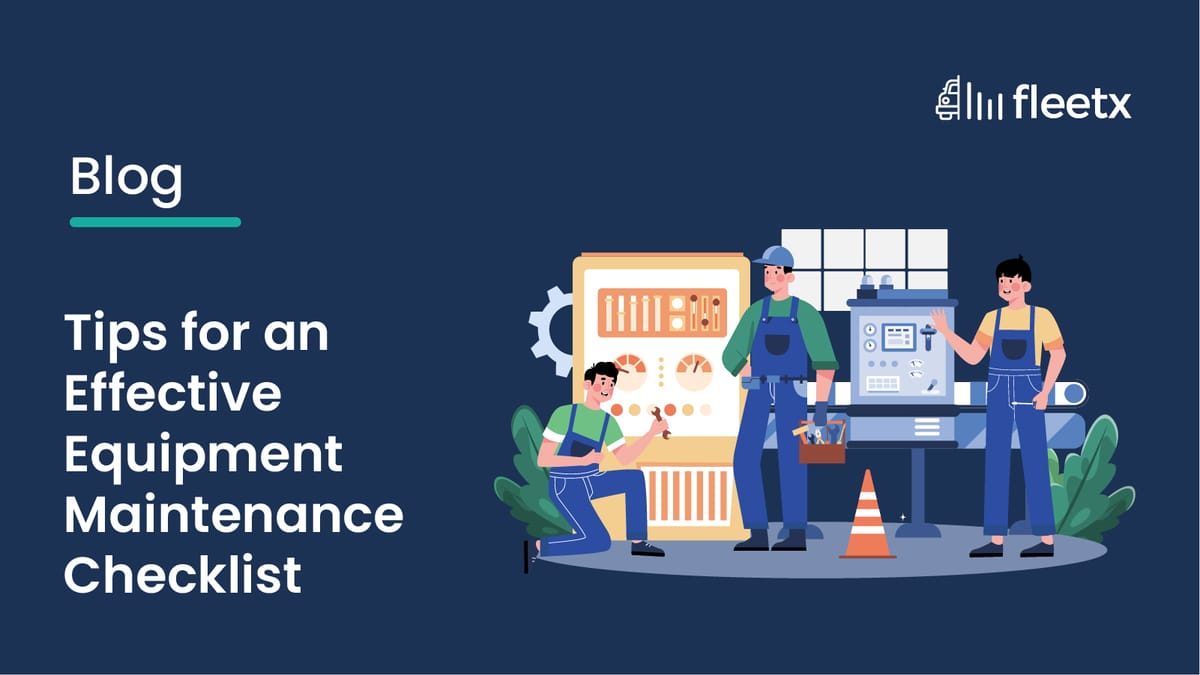
If your fleet is still running on “fix it when it breaks,” you’re essentially playing a risky game with your uptime, safety scores, and margins. Let’s get surgical about maintenance—what to do, when to do it, and why a proactive, data-driven plan is your best solution - within all the chaos.
Types of Maintenance to Improve Fleet Efficiency
A planned preventative maintenance schedule turns unpredictable downtime into scheduled pit stops. That matters because poor maintenance strategies can impact 5–20% of an asset’s productive capacity, and unplanned downtime bleeds industries almost $50 billion annually.
With modern telematics and diagnostics, PM is no longer guesswork. IoT-enabled predictive maintenance (PdM), enabled by a fleet maintenance work order software, helps in keeping a maintenance log and generating maintenance reminders to cut maintenance costs by up to 30% and reduce downtime by up to 45%.
Common Fleet Maintenance Activities
- Scheduled services: Engine oil/filters, fuel/air/drier elements, coolant, belts, hoses, DEF system checks, tire rotations, and tread/depth audits.
- Safety-critical systems: Brakes (linings, drums/discs, air lines), steering linkages, lighting, load securement, mirrors, windshield, wipers.
- Telematics-informed checks: DTC triage, regen frequency, battery health/voltage trends, EGTs, coolant/oil temperature, vibration anomalies.
- Regulatory inspections: Periodic inspections per standard regulations, with documentation and a preventive maintenance record.
Reactive vs Proactive Maintenance
There are two primary types of maintenance, and the differences include -
Why Fleet Managers Need a Fleet Maintenance Plan?
Because uptime pays. Fleets can cover longer distances by executing disciplined maintenance by approximately 18% in one quarter.
On the macro side, India’s IoT-maintenance market is scaling fast (CAGR ~34.5% through 2030), which means your competitors are actively buying the tech to squeeze more life and revenue hours out of the same vehicles.
Essential Components of an Effective Fleet Maintenance Checklist
Fleet managers can maximize their productivity with a 52-week maintenance schedule that works as a planned maintenance schedule and includes -
- Policy & intervals: Lock OEM schedules, usage-based triggers (km, engine hours, fuel-burn), and exception rules for severe duty.
- Telematics & diagnostics: Standardize on a platform that pulls DTCs, temperature, pressures, regen data, and battery/charging health into one pane.
- CMMS discipline: Work orders, checklists, maintenance calendars, technician notes, parts usage, and digital approvals.
- Parts & vendor strategy: Record the parts inventory, stock for turn rate, and set SLAs with dealers (fast-lane bays for <4 labor-hour jobs are gold).
- Compliance by design: Include annual/periodic inspections in maintenance cycles; auto-attach inspection records to the asset file.
- KPIs: Maintenance compliance %, planned vs unplanned work ratio, asset availability/uptime, miles between breakdowns, repeat repair rate, and cost per km.
How to Manage a Fleet Maintenance Program Efficiently
1) Set the targets, then fetch the data - Define asset availability (uptime) and maintenance compliance as the primary KPIs. Many fleets sit in the 80s for service compliance, with top performers reaching 95–100% - you can calibrate ambitions and coaching accordingly.
2) Build an active servicing calendar - Combine time-based intervals with usage-based triggers (kms/engine hours) and escalate to condition-based where sensors support it. This mixed model minimizes both over-service and failures.
3) Shorten the detection-to-repair cycle - Pipe fault codes to maintenance coordinators, auto-create work orders (WOs) in your CMMS, pre-check parts inventory, and slot the unit at the nearest service location or mobile tech.
4) Schedule for reality, not theory -
- Block maintenance windows against actual delivery peaks and driver hours of service (HOS).
- Load-balance the shop with fast lanes for <4-hour jobs; shift deep repairs to off-peak or weekends.
- Use historical duration data to avoid optimistic scheduling that easily turns into missed ETAs.
5) Attack the usual downtime factors -
- Cooling & after treatment: Watch EGTs, regen counts, coolant deltas; flag trend anomalies early.
- Brakes & tires: Link tread depth/wear patterns and brake thickness into maintenance schedules; quantify cost per mm vs roadside risk.
- Electrical: Battery/alternator signatures predict no-starts better.
6) Close the safety loop - Maintenance discipline correlates with crash risk. Pair maintenance activities with driver coaching (e.g., harsh brake/over-rev signals). Modern platforms are bundling real-time coaching to cut incidents further—your safety score and premiums will see the difference.
7) Benchmark relentlessly - Compare your uptime, maintenance ratio, and breakdown frequency against peer fleets and industry studies. What gets benchmarked gets better.
Fast Wins Most Fleets Can Land in 30 Days
- Standardize checklists by vehicle class and route severity; remove duplicate line items.
- Auto-notify drivers for pre-maintenance night drops; no-show alerts go to ops leads.
- Pre-kit commonly needed parts; reorder at min/max to avoid “parked for a ₹50 seal.”
- Tag “repeat repair” assets and run root-cause analysis on the top 10—don’t keep fixing the symptom.
Use AI Where It Fits
- Anomaly detection on temperature/vibrations/regens to flag probable failures weeks ahead (that 3–6 month early warning claim is realistic for mature programs).
- Dynamic service intervals that stretch or compress based on duty cycle (stop-start, urban vs long-haul).
- Parts forecasting to stock what you’ll actually consume next month, not what you did last year.
Build a Data-Driven Maintenance Program to be Future-Ready
Maintenance isn’t a cost center; it’s your uptime engine and a safety program in disguise. The data is stable and loud: proactive maintenance lowers cost (~15–30%), reduces downtime (up to ~45%), raises miles between breakdowns, and correlates with fewer crashes. In India, PdM’s rapid growth suggests early adopters will widen their lead on cost per km and service reliability.
If you remember one thing: move your mix to planned work (≥70%), wire your data so faults become appointments, and measure uptime weekly. The rest is repetition and continuous improvement.
Why should fleets shift from reactive maintenance to a proactive plan?
Reactive maintenance (“fix it when it breaks”) creates longer downtimes, higher emergency costs, and safety risks. A proactive plan using scheduled and predictive maintenance ensures fewer road calls, smoother costs, and improved uptime—improving margins and service reliability.
What are the essential activities in a fleet maintenance schedule?
Key activities include engine and fluid checks, tire and brake inspections, safety system audits, telematics-driven diagnostics, and regulatory inspections. Standardizing these tasks across a 52-week schedule helps reduce surprises and keeps vehicles compliant and road-ready.
How can technology like IoT, telematics, and AI improve fleet maintenance efficiency?
IoT sensors and telematics provide real-time fault codes, temperature readings, and performance data. AI then predicts failures weeks in advance, optimizes service intervals, automates work orders, and even forecasts parts demand. Together, they cut downtime by up to 45% and maintenance costs by ~30%.
What KPIs should fleet managers track to measure maintenance program success?
Critical KPIs include maintenance compliance percentage, planned vs. unplanned work ratio, asset availability/uptime, miles between breakdowns, repeat repair rate, and cost per km. Benchmarking these metrics against industry leaders ensures continuous improvement and competitive advantage.






